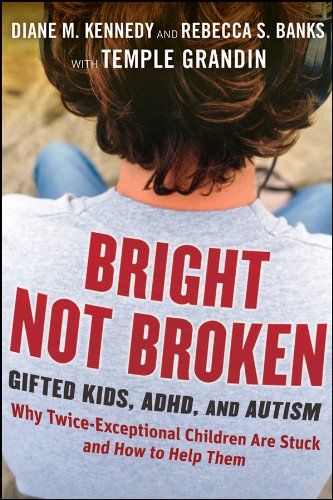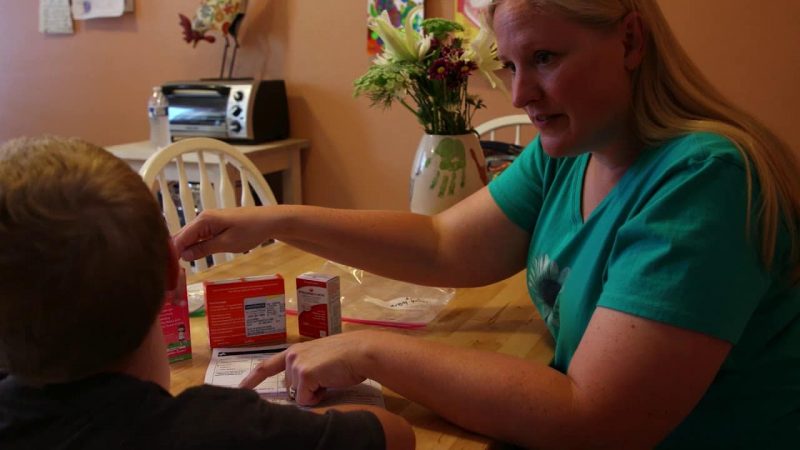This book tells about how to help twice exceptional children who are stuck by the current educational system.

Temple Grandin is one of the most accomplished adults with autism in the world. She was a 2e child who now is a professor and the author of several books. She was the subject of an HBO movie about her life and was one of Time Magazine’s top 100 individuals in 2010.
Kennedy and Banks contacted Grandin to collaborate with them on the subject of 2e children. The book, Bright Not Broken: Gifted Kids, ADHD, and Autism, is the result of their research on the subject.
Format of Bright Not Broken
Contents
This book is divided into three sections. These sections first identify who these children are (Part I: Who they Are), explains why the educational system does not work for them (Part II: Why They’re Stuck), and finally tells parents and educators how to help these children (Part III: How to Help Them).
Part I: Who They Are
The authors describe these children as those that are gifted but often not considered so. The authors use the example of Albert Einstein. Einstein had a brilliant mind but didn’t speak until he was 3 years old and didn’t get along well with his peers. Today he would be diagnosed as autistic.
These children are the ones that cannot sit still in class or appear to just not be paying attention. Often times their giftedness is confused with ADHD, and they are put on meds. By the time the area of their brilliance comes around the drugs have them so relaxed it doesn’t often show. They are misunderstood for a large part of their school years.
Part II: Why They’re Stuck
This section discusses the testing that goes into labeling children. These tests are ordered for inattentiveness or overactive children. They are largely subjective which leaves many children diagnosed with ADHD. In addition, these tests are given during early elementary school before actual grades are given for achievement. These tests are subjective for the most part and have many children misdiagnosed.
Autism is a very confusing disorder with many different types. These children present many of the symptoms of ADHD at times or those of learning disabilities. Without a thorough exam, most Autistic kids fall through the cracks with a misdiagnosis.
Part III: How to Help Them
This section deals first with the steps which need to be taken to correctly identify those students who in fact have a degree of autism. A discussion of the types of tests required occurs as well as ways to minimize the areas that the child is deficient in. The authors also state that children should have their abilities recognized as well.
The section concludes with a discussion on how to educate these children. Supporting services, such as occupational therapy and speech therapy, are discussed. The authors also suggest that RtI, which is being successfully used to help those who are struggling, be used to help those children that are in fact gifted in an area.
Extras in Bright Not Broken
The book includes an extensive list of additional resources. These resources direct the reader to not only more reading on the subject of autism, but also to other ways to help 2e children. Many of these resources were consulted in the research of this book and are referred to in the notes list.
The only complaint I had about this book refers to the abbreviations used throughout. Perhaps I missed the explanation to what they meant the first time, but I found myself turning back to the index many times to discover what they stood for. The index does provide this information in an easily found format. A slightly preferable format would have been to include a glossary defining the terms.
This is an excellent book. It should be required reading for anyone pursuing a degree in education. It provides detailed information on the often misunderstood diagnosis of Autism. Autistic children are those that deserve understanding, because no one knows where the next Albert Einstein or Temple Grandin may be.
Bright Not Broken: Gifted Kids, ADHD and Autism by Diane M. Kennedy and Rebecca S. Banks with Temple Grandin


